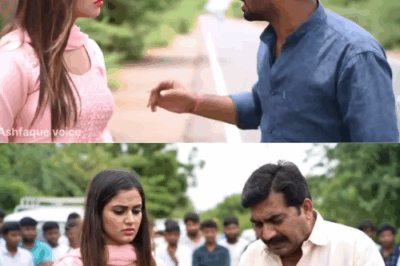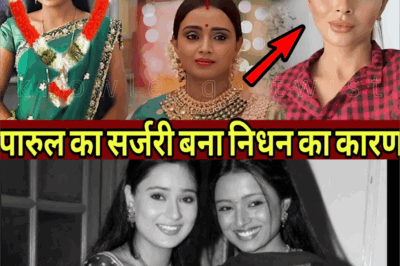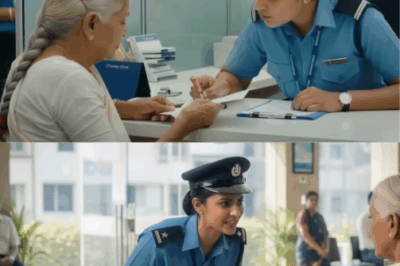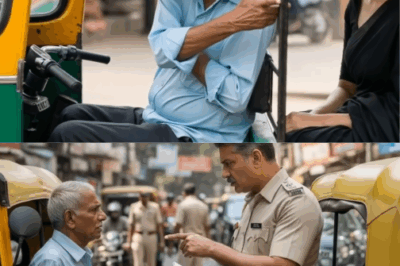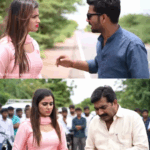पकड़ा गया दुलारचंद का आरोपी, फस गया अनंत सिंह! Mokama Dularchand Yadav Case ! Anant singh
.
.
Introduction
A political storm from Mokama, Bihar, has jolted social media and reignited an old debate about power, patronage, and the rule of law in the state’s politics. The death of Dularchand Yadav—once a formidable local figure with deep roots in Mokama’s power corridors—has triggered outrage, grief, and a deluge of competing narratives. With one side alleging a targeted attack by supporters of NDA candidate and strongman Anant Kumar Singh, and the other side insisting it was a provocation staged by opponents, the episode has become both a legal puzzle and a political battlefield. As Bihar moves toward crucial elections, the incident threatens to reshape strategy, sentiment, and the tenor of campaigning.
This report organizes what is known so far, who is accusing whom, and why the case has implications far beyond a single constituency. Investigations are ongoing; the account below synthesizes widely circulated statements, videos, and public accounts while noting points that remain unverified.
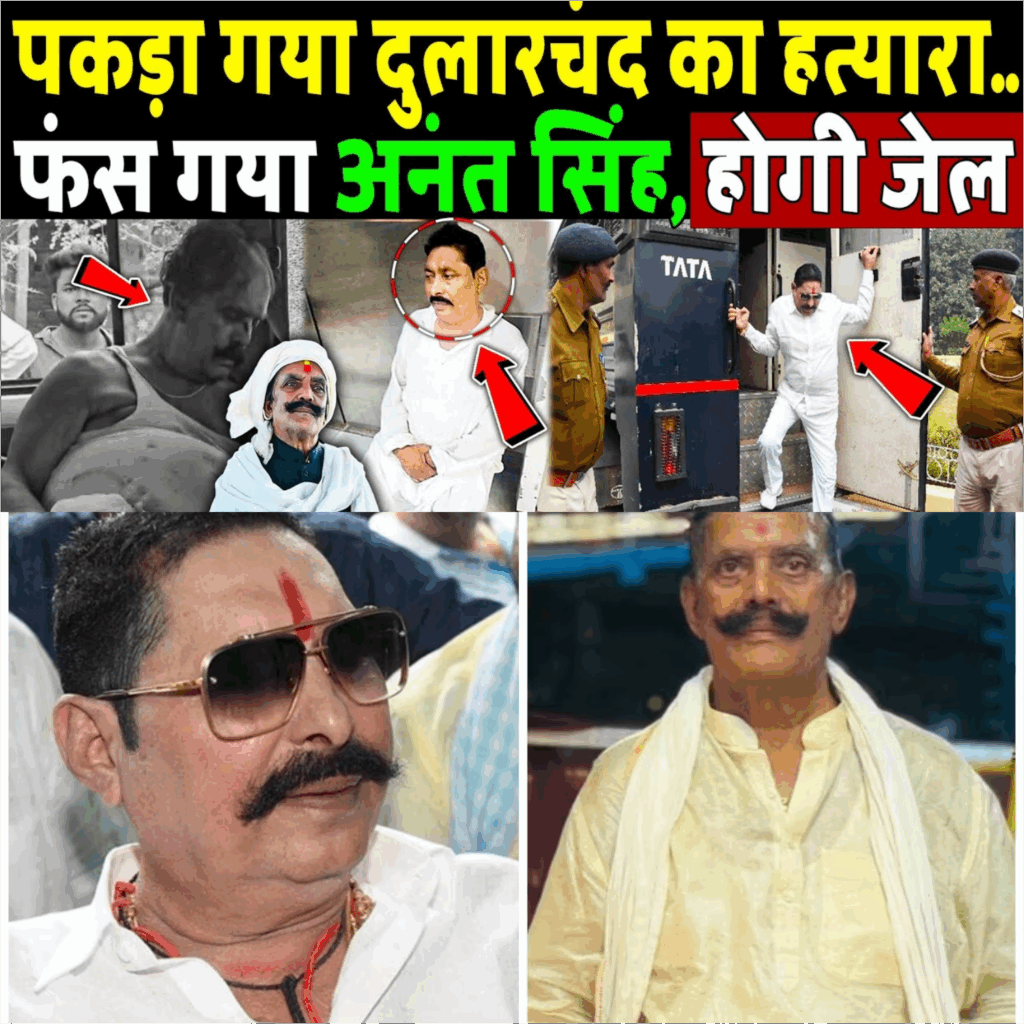
The Flashpoint on a Narrow Road
The immediate trigger was an encounter between two political convoys:
One aligned with Piyush Priyadarshi, a candidate supported by Jan Swaraj.
The other associated with Anant Kumar Singh, the NDA’s candidate from Mokama, widely known by his moniker “Chhote Sarkar.”
Eyewitness accounts and viral clips suggest that when the two convoys approached each other on a narrow stretch, tension spiked. Shouts escalated, vehicles jostled, and glass shattered in the chaos that followed. In that swirl of confrontation stood Dularchand Yadav. Moments later, he sustained grievous injuries that, according to multiple reports, proved fatal. Within hours, the incident metastasized from a roadside clash into a high-stakes political crisis.
Videos soon surfaced showing a teary Piyush Priyadarshi beside vehicles with smashed windows, alleging an attack on his convoy. The imagery—raw, immediate, emotional—powered a narrative of victimhood and aggression, further polarizing public discourse.
Who Was Dularchand Yadav?
Dularchand’s profile makes this more than a routine law-and-order case:
Through the 1980s and 1990s, he was counted among the most influential figures in Mokama’s Tal region, a landscape where politics and muscle power often intersect.
Patna Police in 2019 labeled him a “notorious criminal” upon arrest, underscoring his complicated legacy.
He had ties with RJD supremo Lalu Prasad Yadav and once contested the Mokama assembly seat, though he lost.
Over decades, he maintained relationships with multiple parties and power centers. For long, he was aligned with Anant Singh and even lauded him in public.
The rupture came this year: Dularchand broke ranks with Anant Singh and threw his weight behind Piyush Priyadarshi, becoming increasingly vocal against Anant on social media. Tensions sharpened after Dularchand’s appearance on a major TV channel, where he made insinuations about Anant Singh’s wife—now an MLA—and issued caste-laced remarks. The comments divided audiences and inflamed tempers across Mokama’s already fraught political terrain.
Claims, Counterclaims, and the Death of Dularchand
Two sharply opposed narratives emerged after the clash:
Allegations by Dularchand’s family and supporters:
They claim Anant Singh’s supporters first shot Dularchand in the leg.
They further allege he was run over by a car afterward, leading to his death.
They frame the incident as a targeted retaliation linked to recent personal remarks and shifting loyalties.
Denials and counter-allegations from Anant Singh’s camp:
They insist Jan Swaraj workers initiated the confrontation, including stone-pelting that damaged a dozen vehicles and injured several of Anant’s supporters.
They released photos and videos to buttress their account.
They attribute the fatal escalation to chaos in the crowd, distancing Anant from direct involvement.
Anant Singh personally weighed in, stating he was merely passing with his convoy when “Dularchand’s people” attacked his supporters and “someone in the crowd fired.” He leveled a serious allegation against another heavyweight, Surajbhan Singh, accusing him of orchestrating the “entire game” and implying that Dularchand’s killing was engineered to cause electoral damage.
A Community on Edge, a Police Probe Underway
The aftermath was tense and telling:
Local residents reportedly refused for nearly five hours to allow removal of the body, signaling distrust and anger.
Heavy police deployment followed to stabilize the situation.
Raids and preliminary investigations began, with authorities seeking to reconstruct the timeline, identify shooters, and locate those who instigated violence.
The stakes are higher because the Model Code of Conduct is in force. RJD leader Tejashwi Yadav questioned how firearms were in circulation during this period. Purnea MP Pappu Yadav visited the bereaved family, pointedly asking why Anant Singh’s name surfaces repeatedly in “big incidents,” and accusing the administration of shielding actual culprits while implicating opposition workers. He also expressed concern for Surajbhan Singh’s safety amid spiraling accusations.
Mokama’s Political Grammar: Power, Protection, and Patronage
Mokama’s political culture is distinct and often unforgiving:
Influence derives as much from perceived protection and street-level strength as from party symbols.
Alliances are fluid; reputations are built and broken in public confrontations.
The electorate weighs development promises alongside the felt need for security in a contested terrain.
In this context, Dularchand’s killing is not merely a crime statistic—it is a symbolic rupture. Conversations in tea stalls and market corners reflect a recalibration:
Some voters vow to “vote with a cool head,” resisting emotional churn.
Others argue that only a strong leader can ensure peace in a volatile environment.
Still others see the incident as proof that personal slurs and casteist rhetoric corrode public life and can spark deadly consequences.
The Social Media Battlefield
Online discourse split into two camps:
One reads the incident as part of a larger “game” of Bihar’s power politics, where dissenters and defectors pay steep prices.
The other condemns the degradation of public speech—arguing that no matter the rivalry, personal and caste-based attacks are unacceptable and invite dangerous escalations.
Clips of Dularchand’s interviews are being mined for proof and provocation alike. To some, his bluntness was courage; to others, recklessness. Either way, his words have become inseparable from the narrative of his death.
What This Means for Anant Singh, Piyush Priyadarshi, and Surajbhan Singh
Anant Singh faces renewed scrutiny. Even if investigations clear him of direct involvement, the optics are damaging in an election season. His strategy appears twofold: deny culpability and reframe events as a conspiracy by rivals to tarnish him and fracture his support base.
For Piyush Priyadarshi, the images of a shaken candidate standing by shattered vehicles may galvanize sympathy and support among voters weary of intimidation. His camp’s message is clear: entrenched power, threatened by change, resorts to force.
Surajbhan Singh, now directly accused by Anant, is drawn into the legal and political spotlight. Whether this remains a rhetorical feint or becomes a formal investigative line will depend on evidence and administrative will.
Facts, Unknowns, and the Path to Clarity
What we know:
A clash occurred between convoys associated with Piyush Priyadarshi and Anant Singh.
Violence escalated; multiple vehicles were damaged; people were injured.
Dularchand Yadav was killed during the confrontation.
Police have deployed forces, begun raids, and opened a probe.
Senior political figures have staked out accusatory and defensive positions.
What remains unclear:
Who fired the fatal shot?
Whether Dularchand was deliberately run over or fell victim to uncontrolled chaos.
The exact sequence of events that turned verbal confrontations into lethal violence.
Any direct command responsibility that can be legally attributed to Anant Singh or, as alleged, to Surajbhan Singh.
The credibility and speed of the investigation will determine whether this turns into a durable electoral narrative or yields to facts that can anchor accountability.
Electoral Implications: Security, Stability, and Strategy
The incident could reorder campaign priorities:
Law and order may dominate voter concerns, particularly in constituencies where fear of political violence is palpable.
Parties will recalibrate messaging: some will promise protection and stability; others will campaign against the normalization of coercion.
Turnout effects are uncertain. Violence can depress participation in fear-struck pockets but can also mobilize voters seeking change.
If the probe swiftly identifies culpable individuals, it could stabilize the discourse. If it stalls or appears partisan, the incident may harden cynicism and deepen polarization.
The Human Cost
Behind the political theatrics lies a grieving family and a community scarred by violence. Outside Dularchand’s home, memories and myths intermingle: some remember his plain-spokenness, others his readiness for confrontation, still others his advocacy for the voiceless. His legacy, like Mokama’s political culture, is complicated—and now irrevocably bound to a death that has rattled the public square.
Conclusion
Dularchand Yadav’s killing is a stark reminder that in Mokama, the grammar of politics still too often leans on force. Two convoys met; a confrontation spiraled; a man died; and an entire constituency was thrust into a reckoning with its own political character.
Amid the blizzard of allegations—against Anant Singh, toward Surajbhan Singh, and between rival camps—the imperative is to separate heat from light. Bihar’s voters deserve facts, accountability, and campaigns conducted within the bounds of law and decency. Whether this becomes a turning point depends on three things: a credible investigation that establishes sequence and responsibility; a responsible political class that resists exploiting grief; and an electorate willing to prize stability without tolerating impunity.
Until authorities present verified findings, restraint is not just advisable—it is essential. What is certain is that Mokama’s story now stands as a mirror to Bihar’s larger political struggle: a state striving to reconcile democratic aspiration with the lingering shadows of muscle power. The outcome will shape not just who wins the next election, but what kind of politics defines the road ahead.
.
News
अमीर चेयरमैन ने एक अनाथ लड़के को अपना इकलौता खाना एक आवारा कुत्ते के साथ बांटते हुए देखा …
अमीर चेयरमैन ने एक अनाथ लड़के को अपना इकलौता खाना एक आवारा कुत्ते के साथ बांटते हुए देखा … कहते…
“मैं हज़ार डॉलर में अनुवाद करूंगा” — भिखारी बोला, अमीर हंसा… फिर जो हुआ, सब दंग रह गए 💔✨
“मैं हज़ार डॉलर में अनुवाद करूंगा” — भिखारी बोला, अमीर हंसा… फिर जो हुआ, सब दंग रह गए 💔✨ सड़क…
IPS मैडम के ऊपर कीचड़ क्यों डाला ? फिर उसके बाद जो हुआ।
IPS मैडम के ऊपर कीचड़ क्यों डाला ? फिर उसके बाद जो हुआ। सुबह की हल्की धुंध और ट्रैफिक की…
पारुल चौहान का क्यों हुआ अचानक निधन? Parul chohan Dea*th News viral video? Parul chohan ||
पारुल चौहान का क्यों हुआ अचानक निधन? Parul chohan Dea*th News viral video? Parul chohan || . . Clearing the…
DM की माँ जब पैसा निकालने बैंक गई तो भिखारी समझकर स्टाप ने लात मारा,फिर जो हुआ..
DM की माँ जब पैसा निकालने बैंक गई तो भिखारी समझकर स्टाप ने लात मारा,फिर जो हुआ.. सुबह का समय…
IPS मैडम को आम लड़की समझ कर Inspector ने बीच सड़क पर छेड़ा फिर Inspector के साथ जो हुआ।
IPS मैडम को आम लड़की समझ कर Inspector ने बीच सड़क पर छेड़ा फिर Inspector के साथ जो हुआ। सुबह…
End of content
No more pages to load



